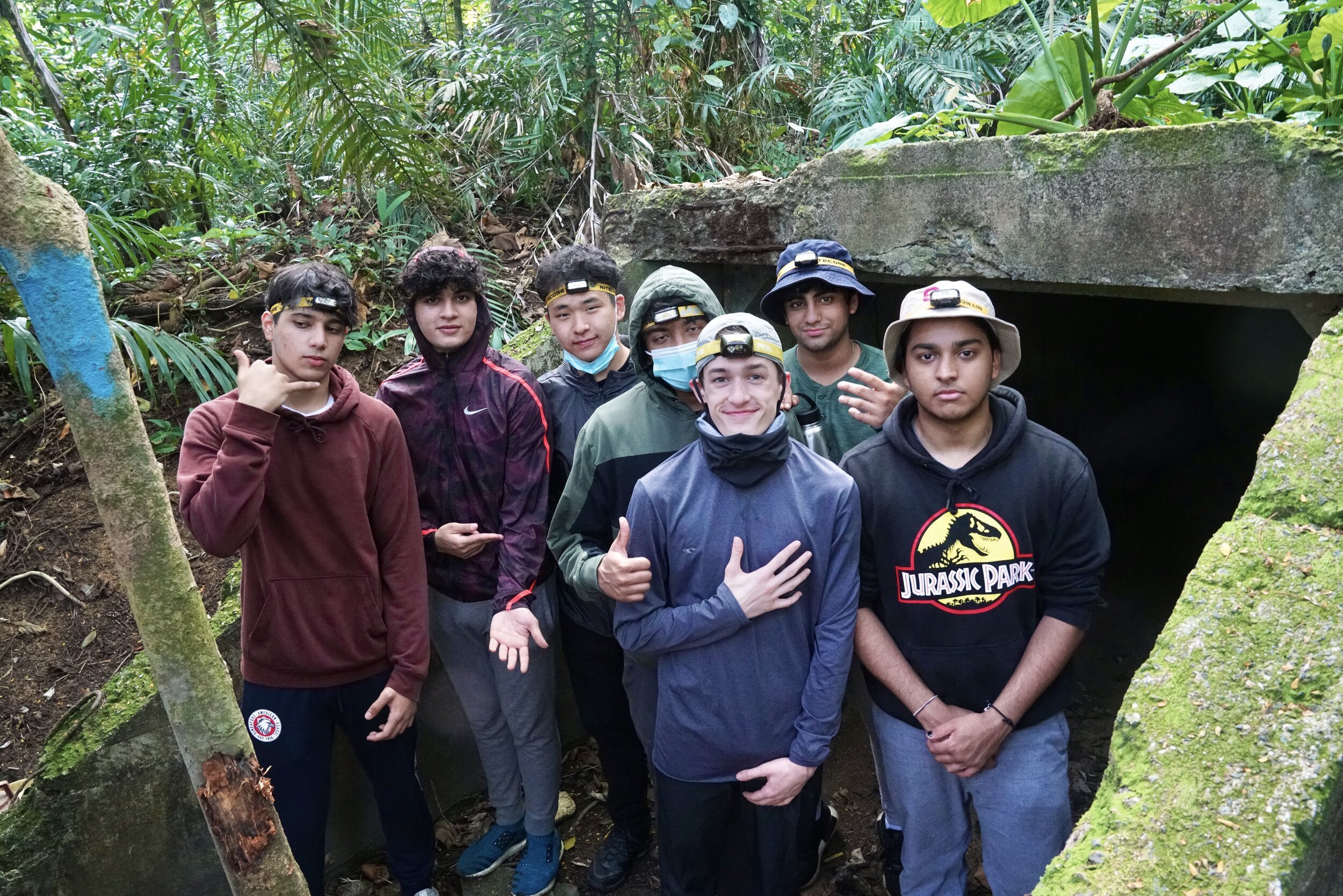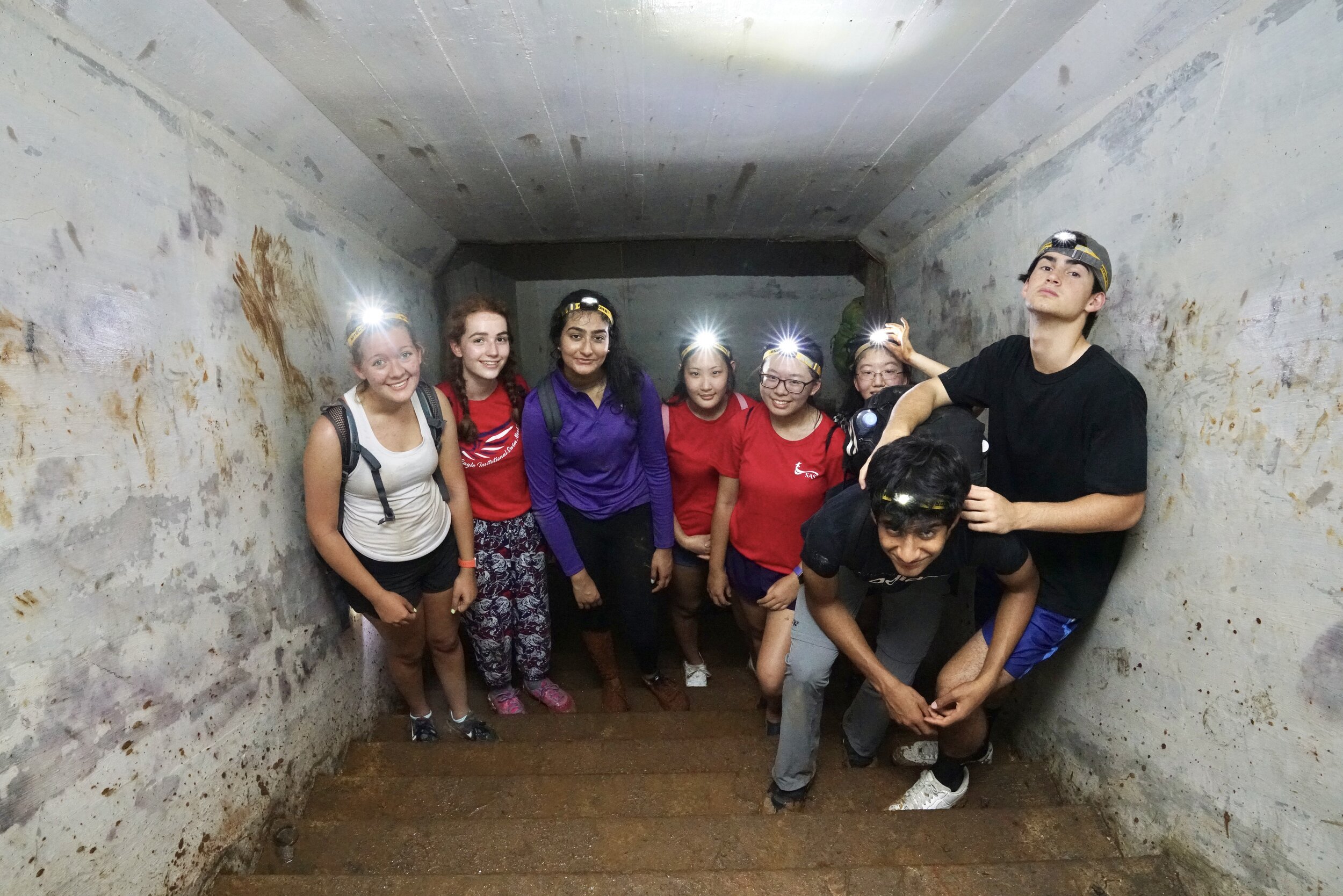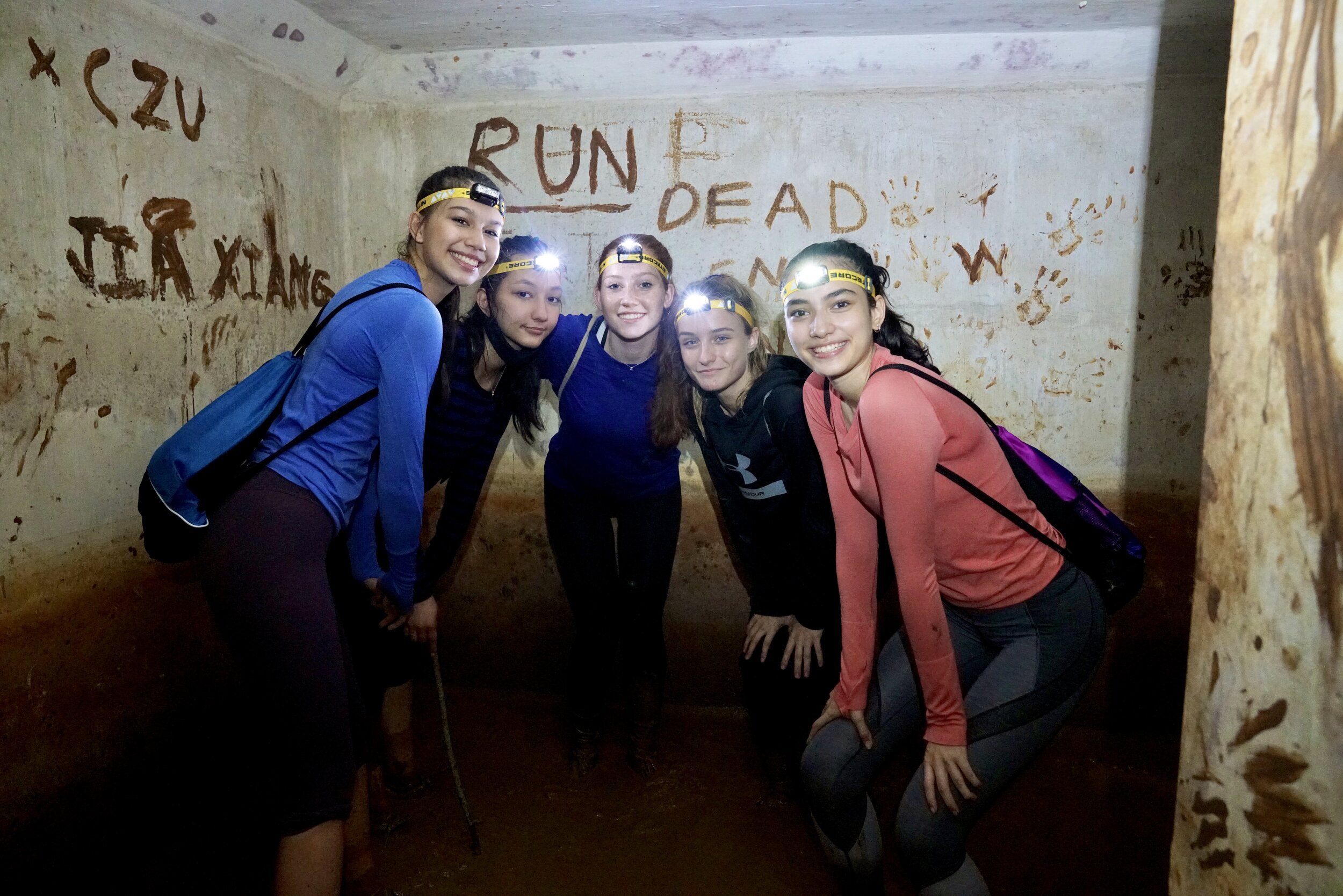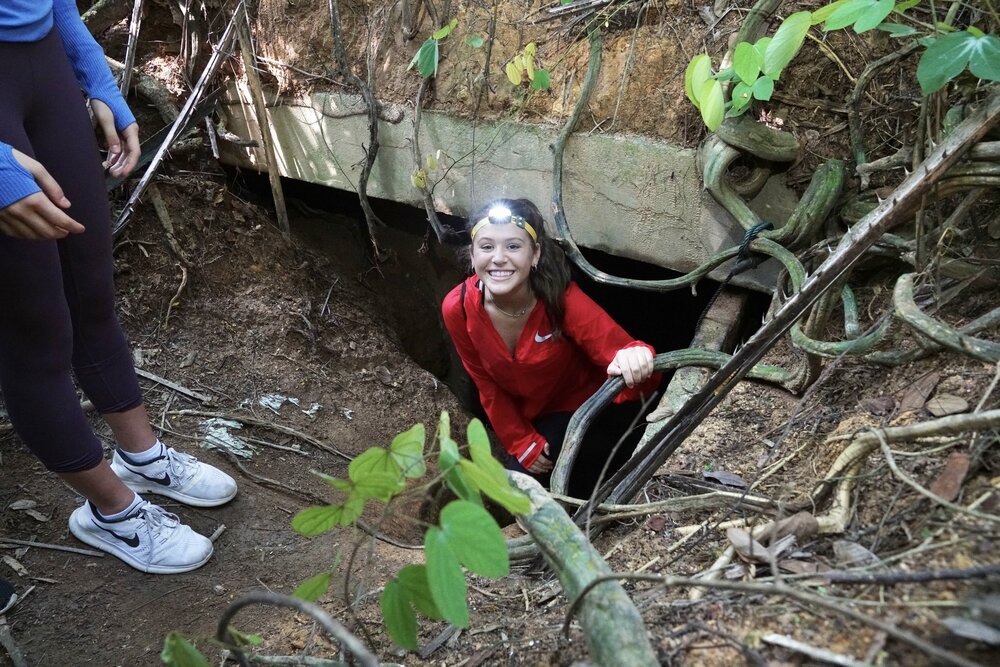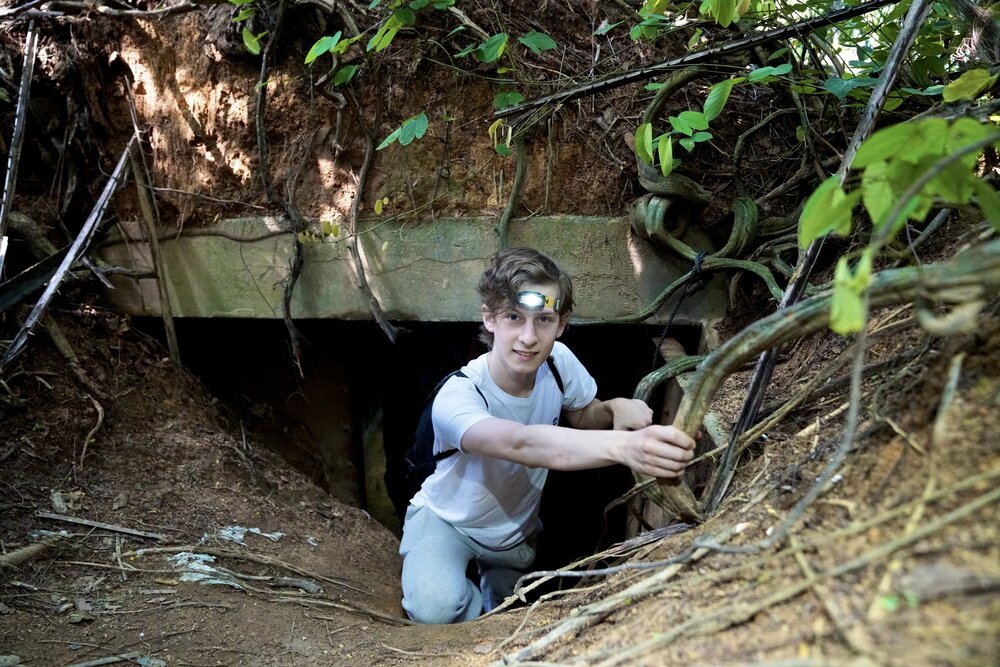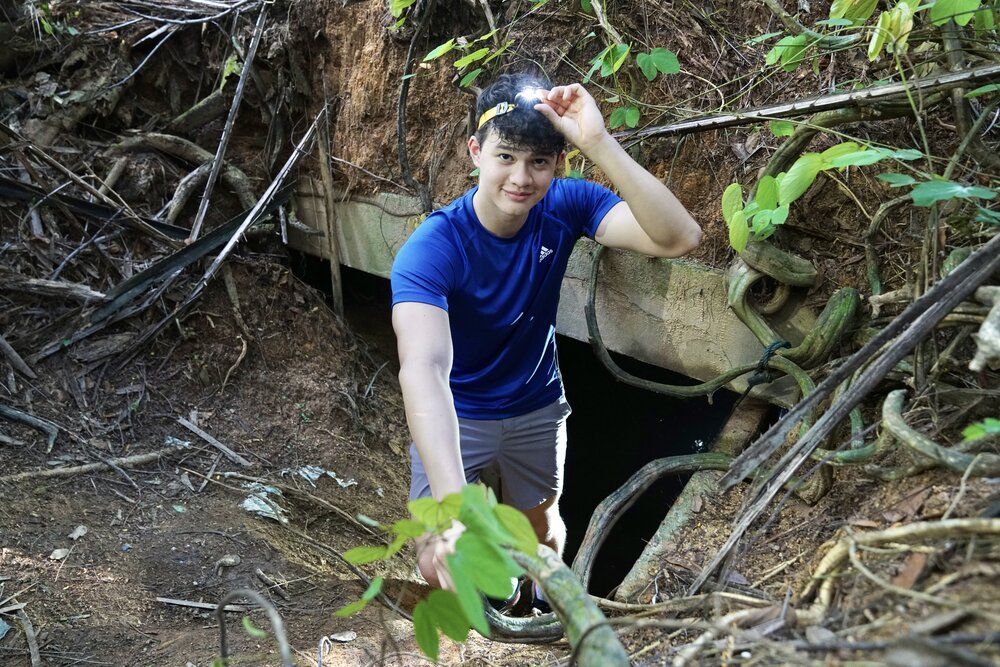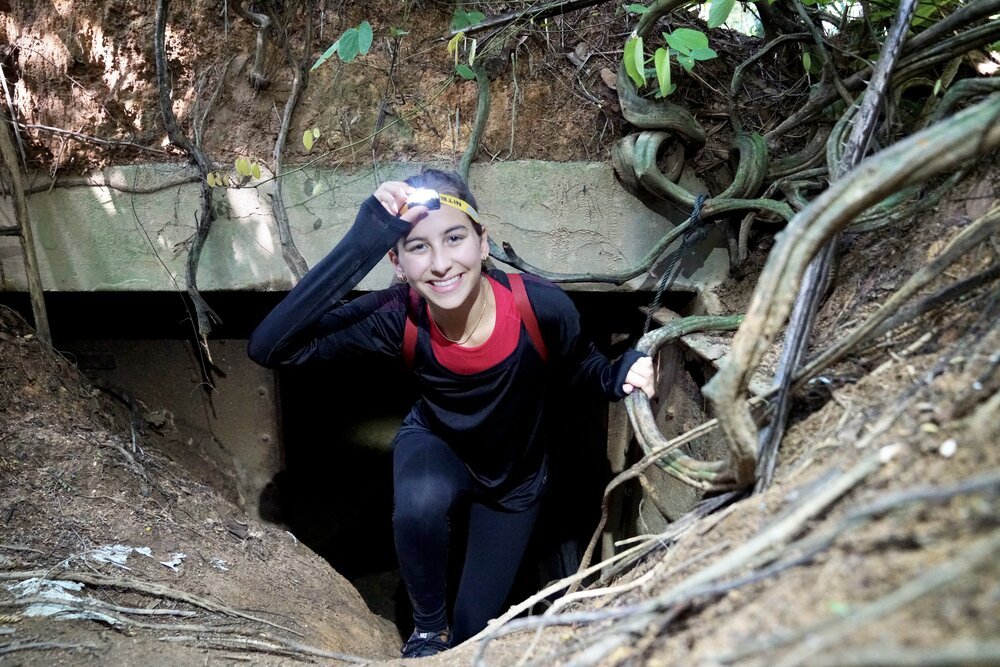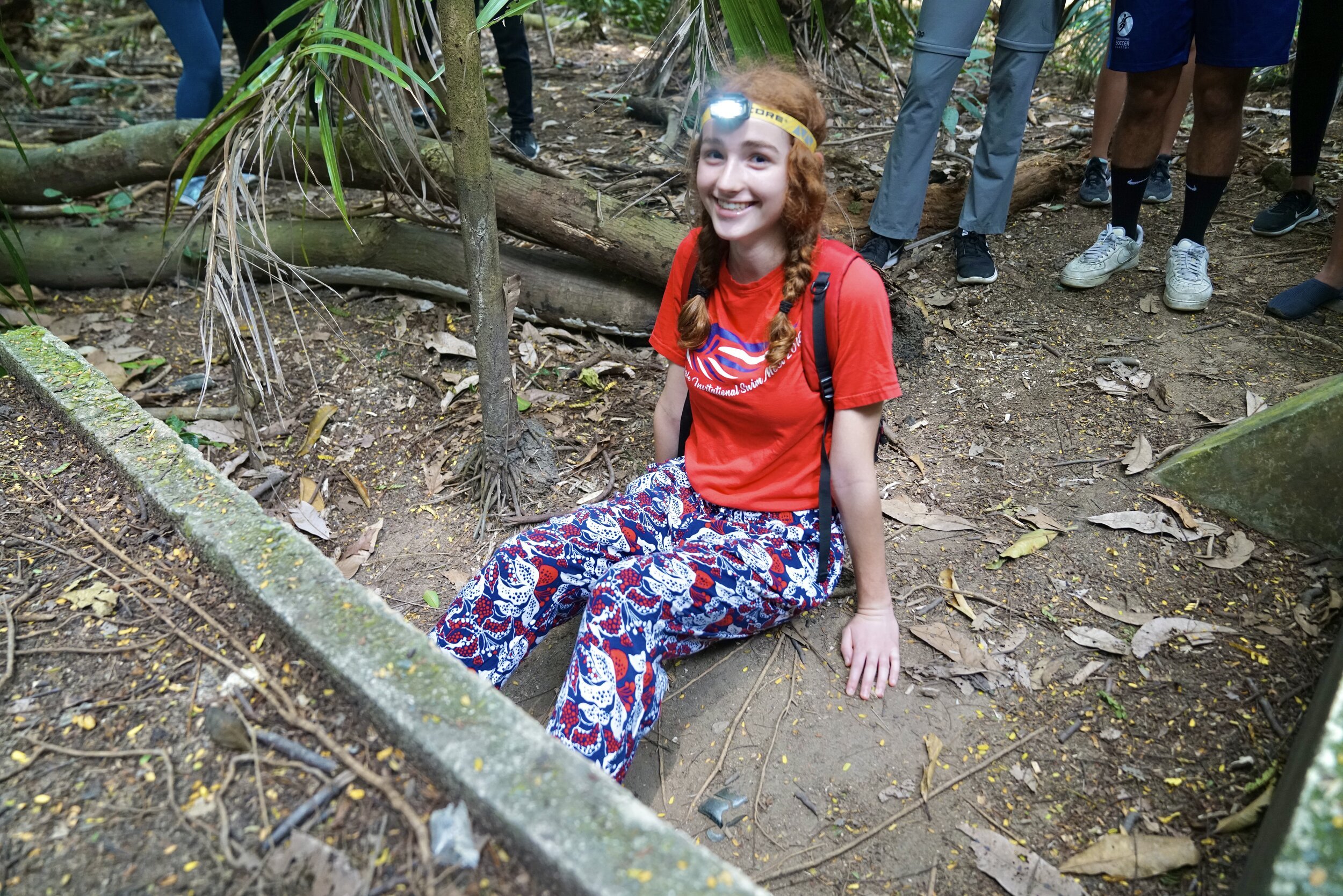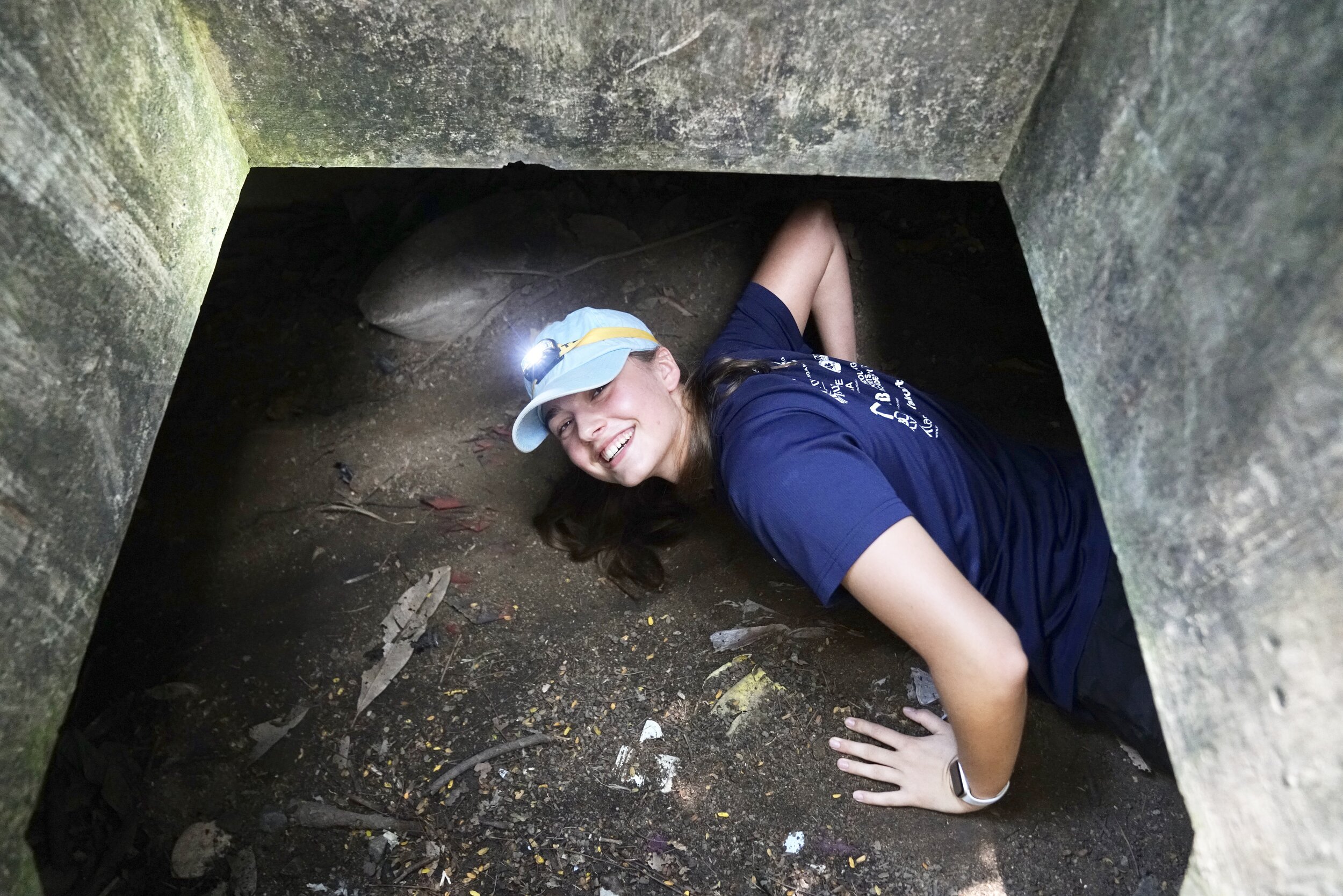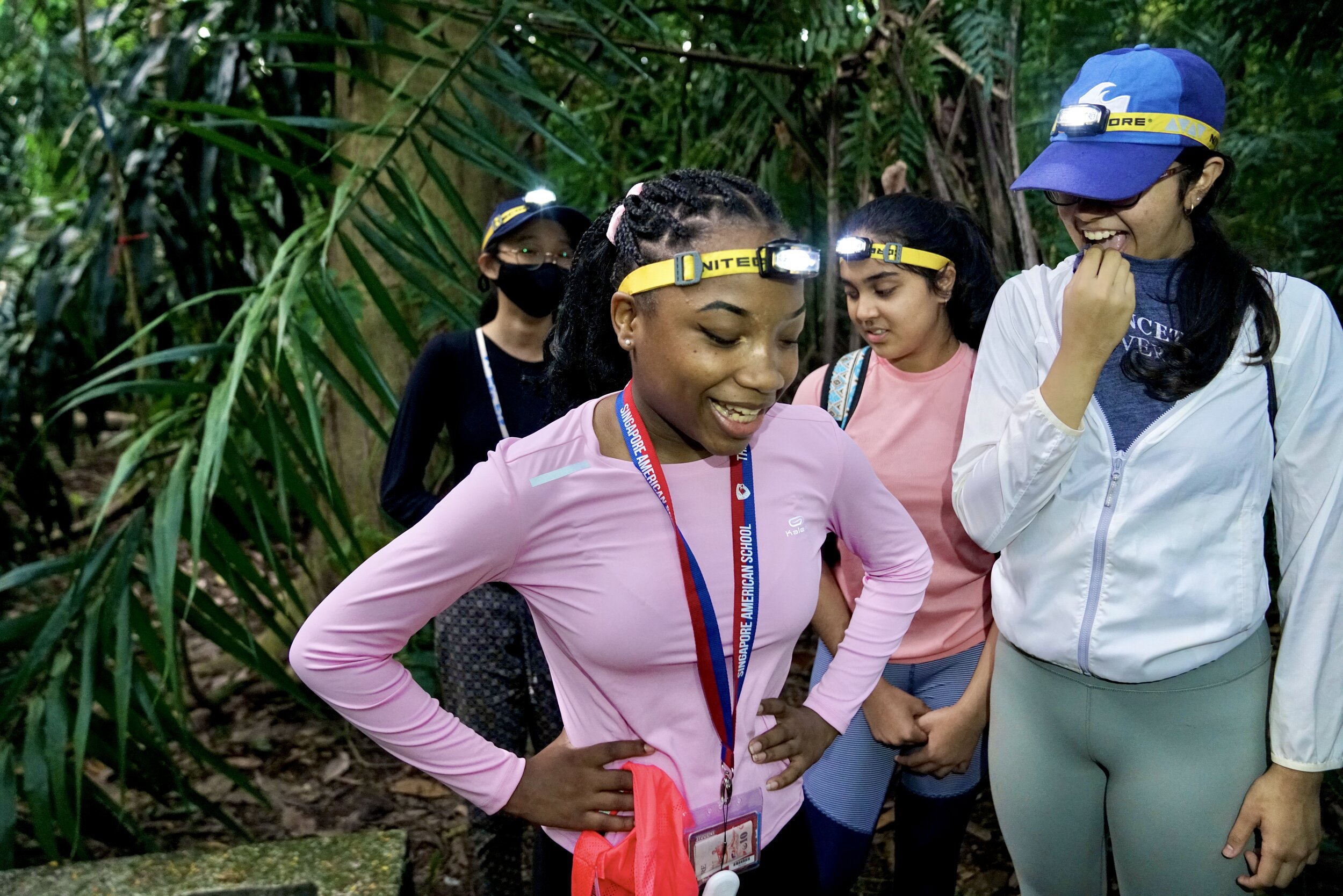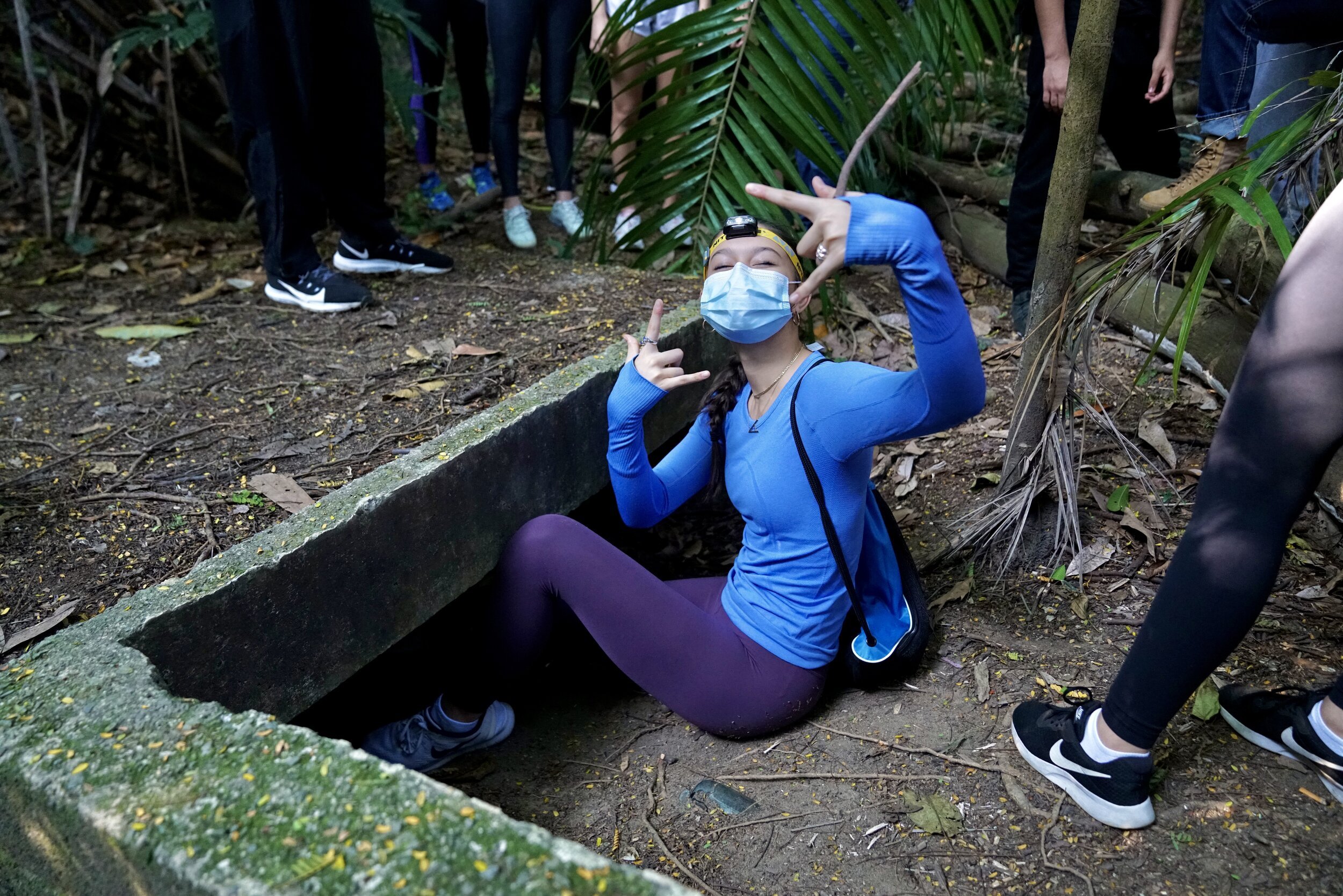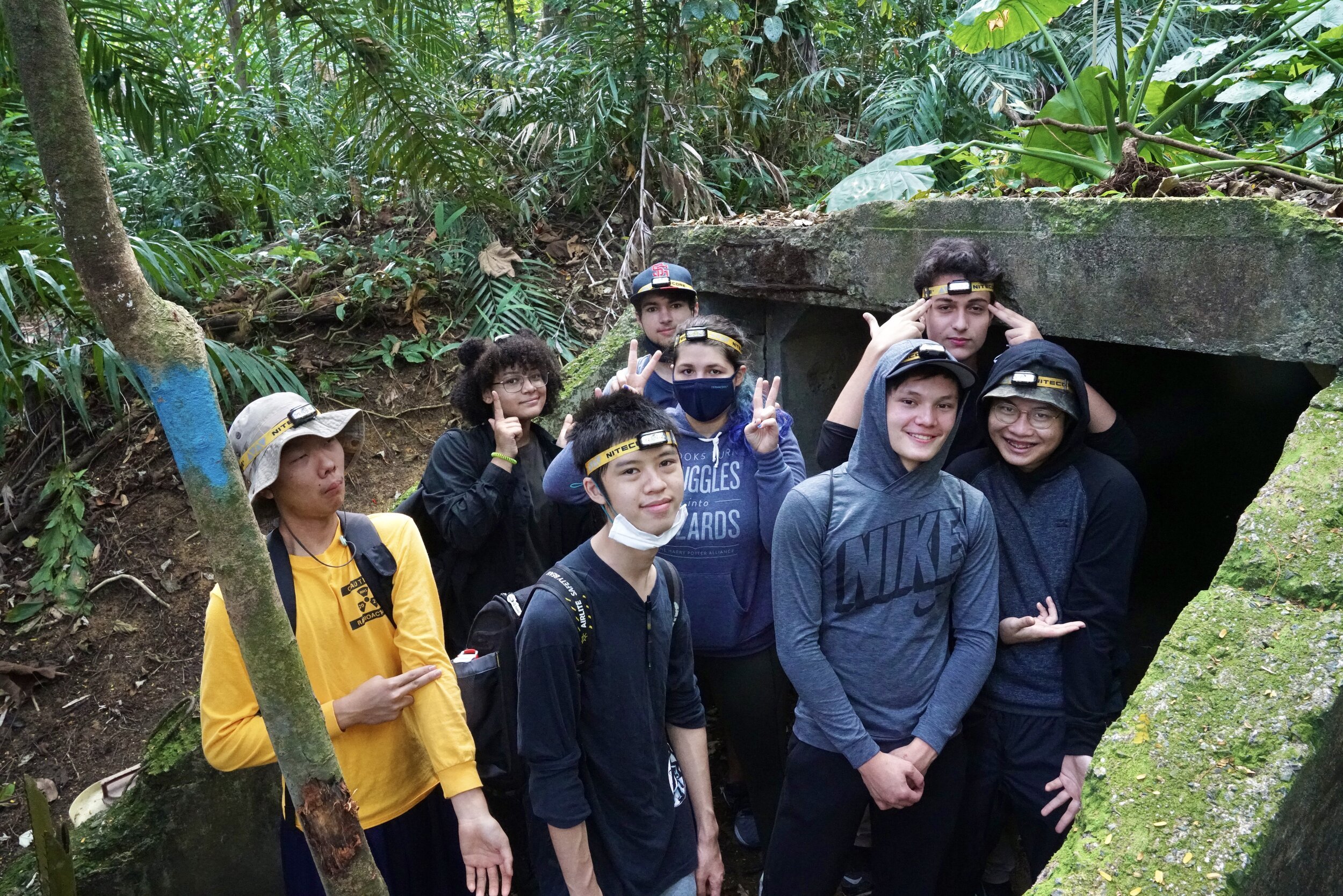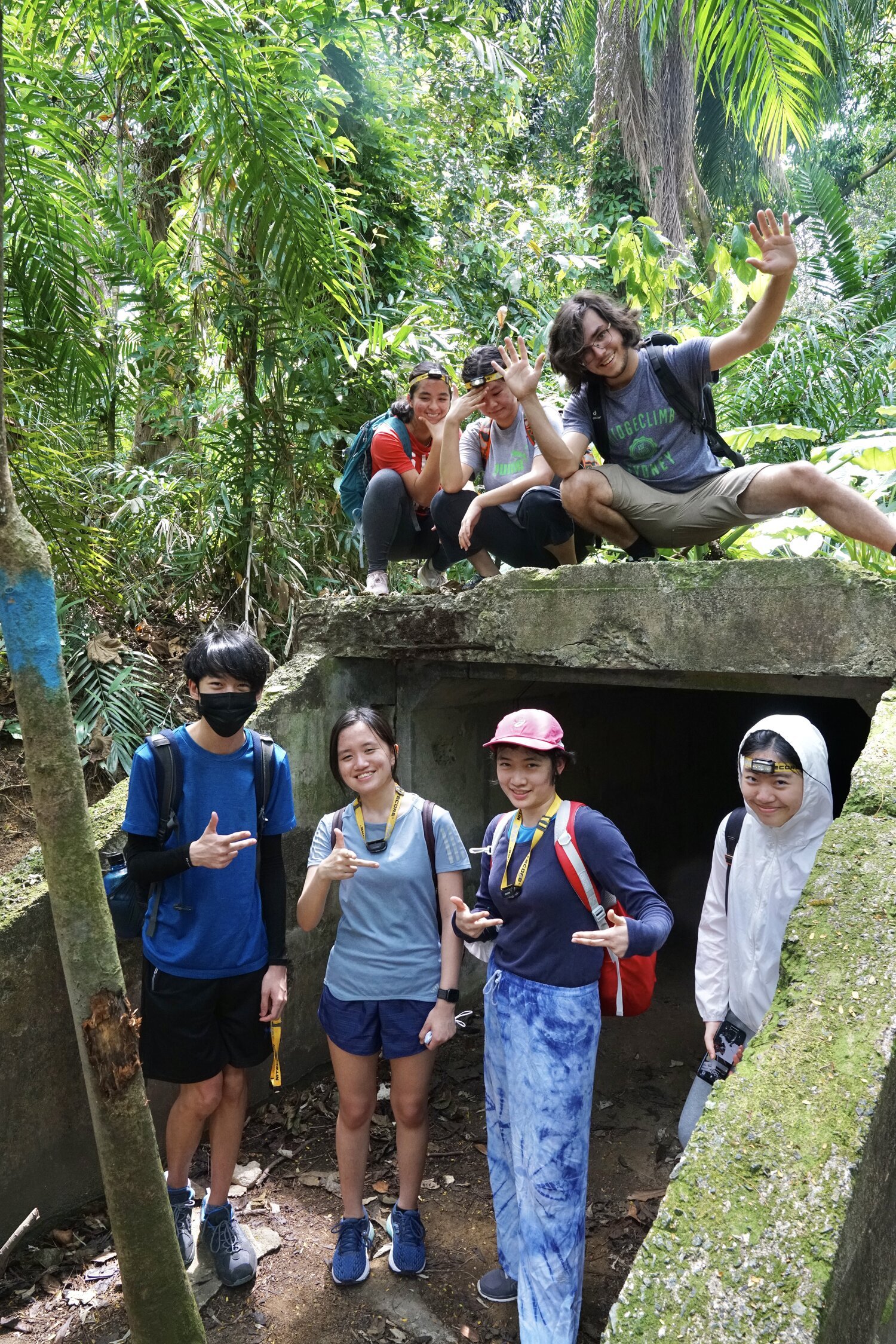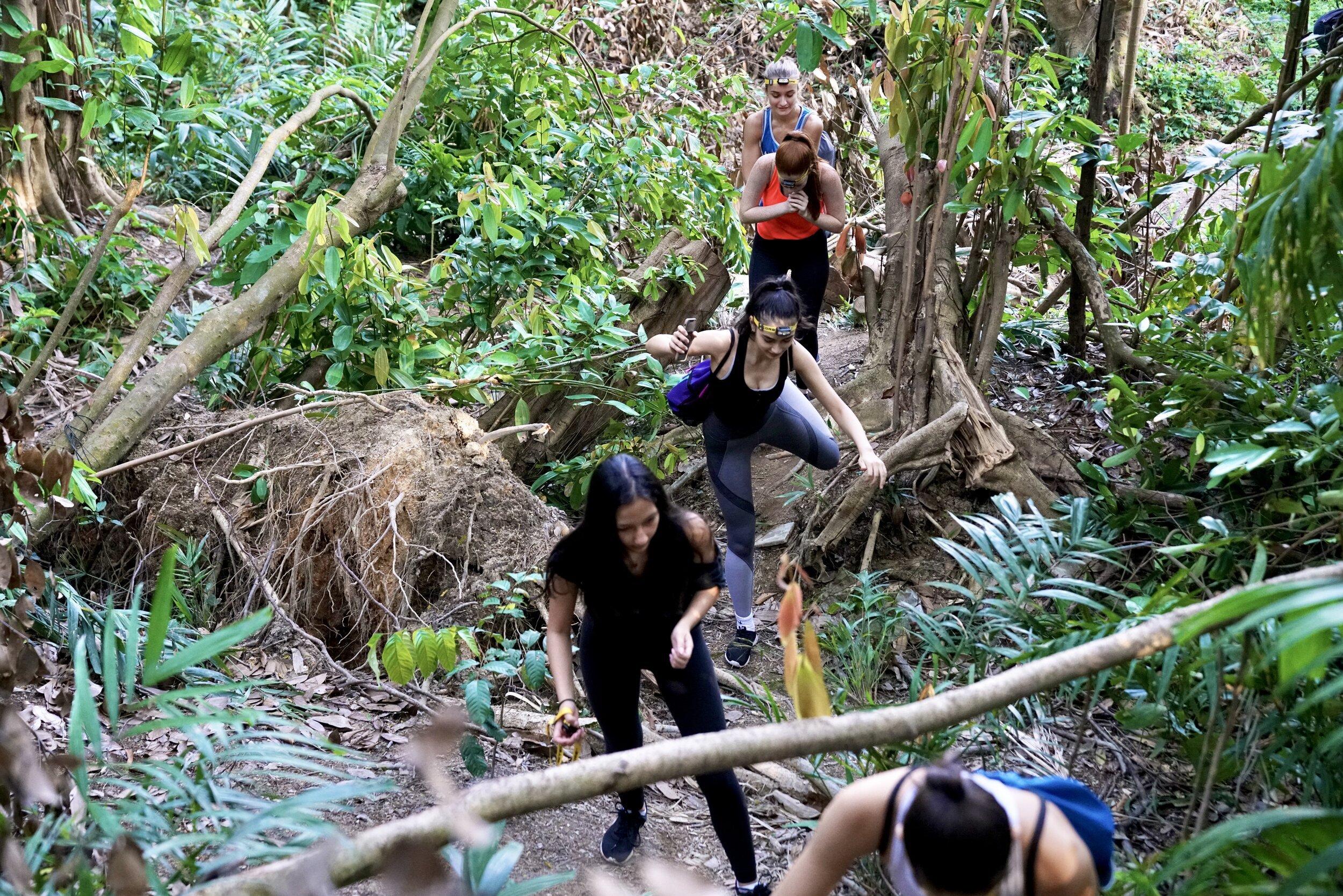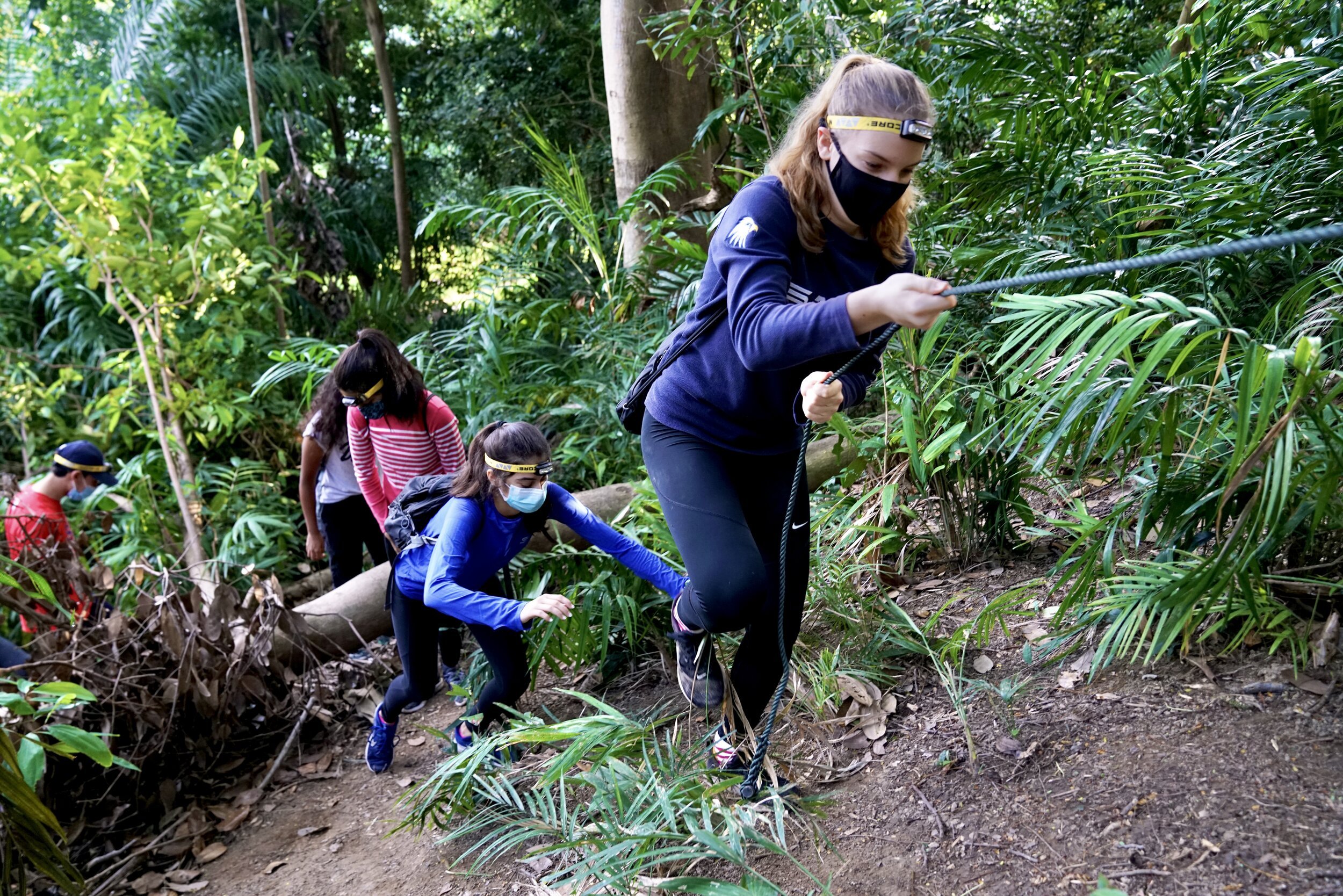B.E. x Singapore American School (SAS)
Sunlight filtered through the green canopy and cricket calls echoed as Andy and his classmates romped through the rainforest. More than a nature walk, the SAS students were exploring the tropical jungle in search of an abandoned WWII bunker.
Ducking the trailing vines and clambering over fallen logs, they followed their guide Scott through the undergrowth, chattering among themselves.
Emerging into a small clearing, the students suddenly stopped short.
In the middle of the clearing, partially covered by foliage and rambling vines, was the opening to a mysterious underground stone bunker.
ADVENTURE IN THE SOUTH BUNKER
First built by the British and last used by the Japanese, the South bunker has long since been abandoned.
Originally part of a fuel reserve depot that serviced the British Royal Air Force while Singapore was still under colonial rule, it was occupied by Japanese soldiers during WWII.
“My favourite part of the adventure was the suspense of entering a WWII bunker in Singapore. It felt like we were in a movie. I also really liked the enthusiasm of the guides.”
“As someone who loves history, I have read about the significance of the battle of Singapore. I was looking forward to expanding my understanding of WWII and Singapore through this unique adventure and I enjoyed the informative tour that the guides gave.”
Slipping through the opening, the students found a sprawling network of tunnels, flights of stairs, underground rooms, rusted pipes and long-empty fuel tanks.
Andy, Ayam and their schoolmates were treated to stories about the bunker’s colourful history as they traipsed through the calf-high mud and explored the underground structure.

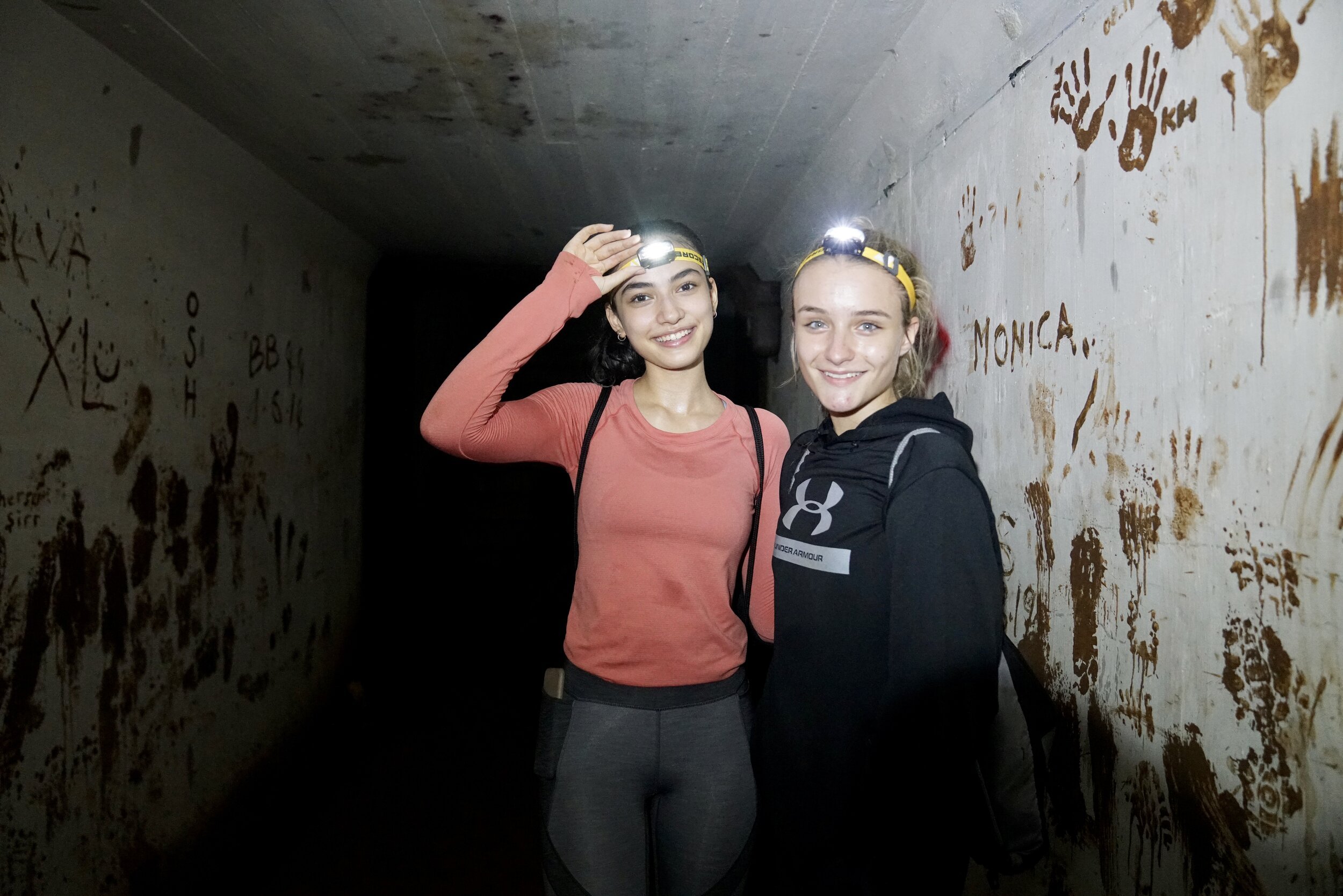
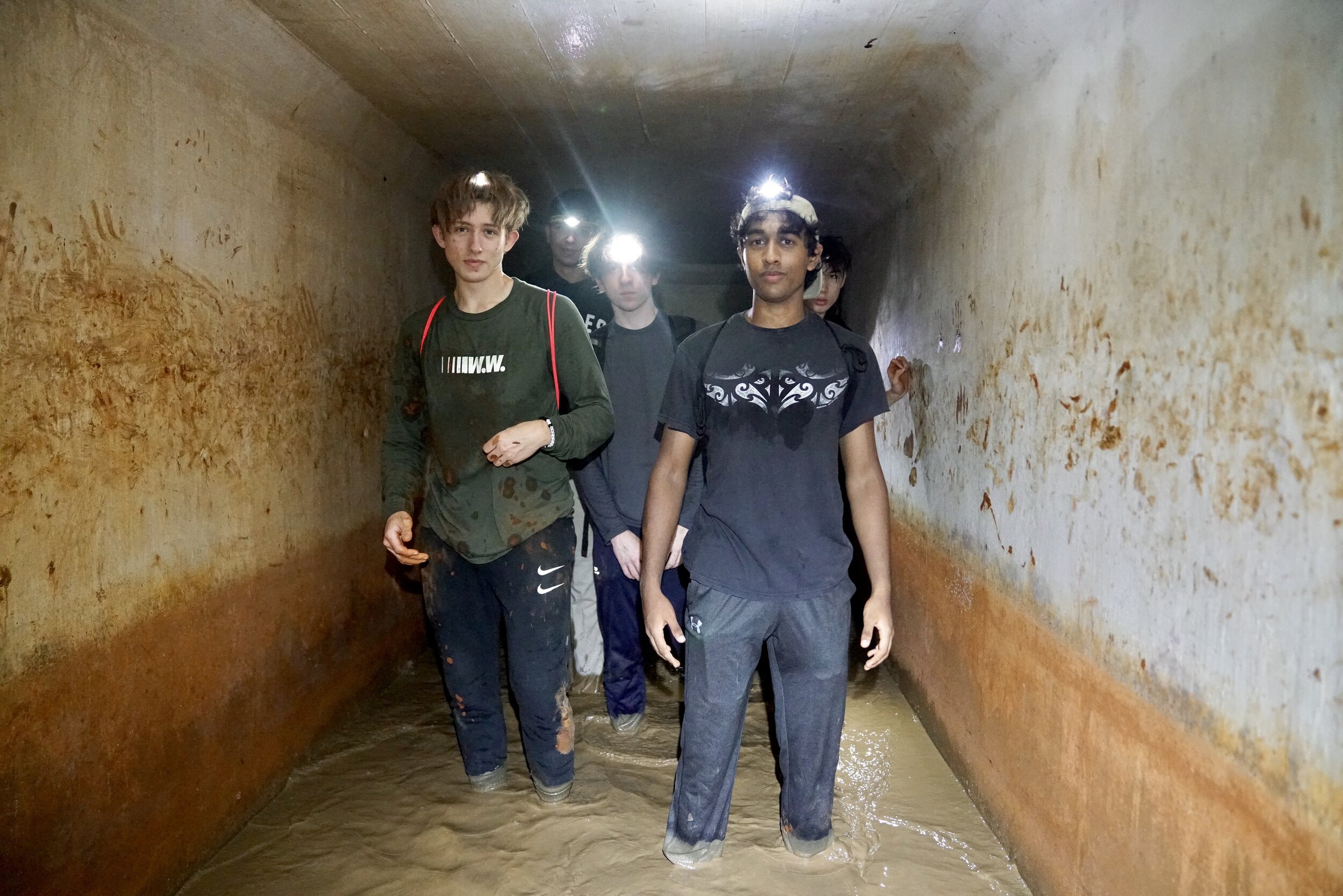
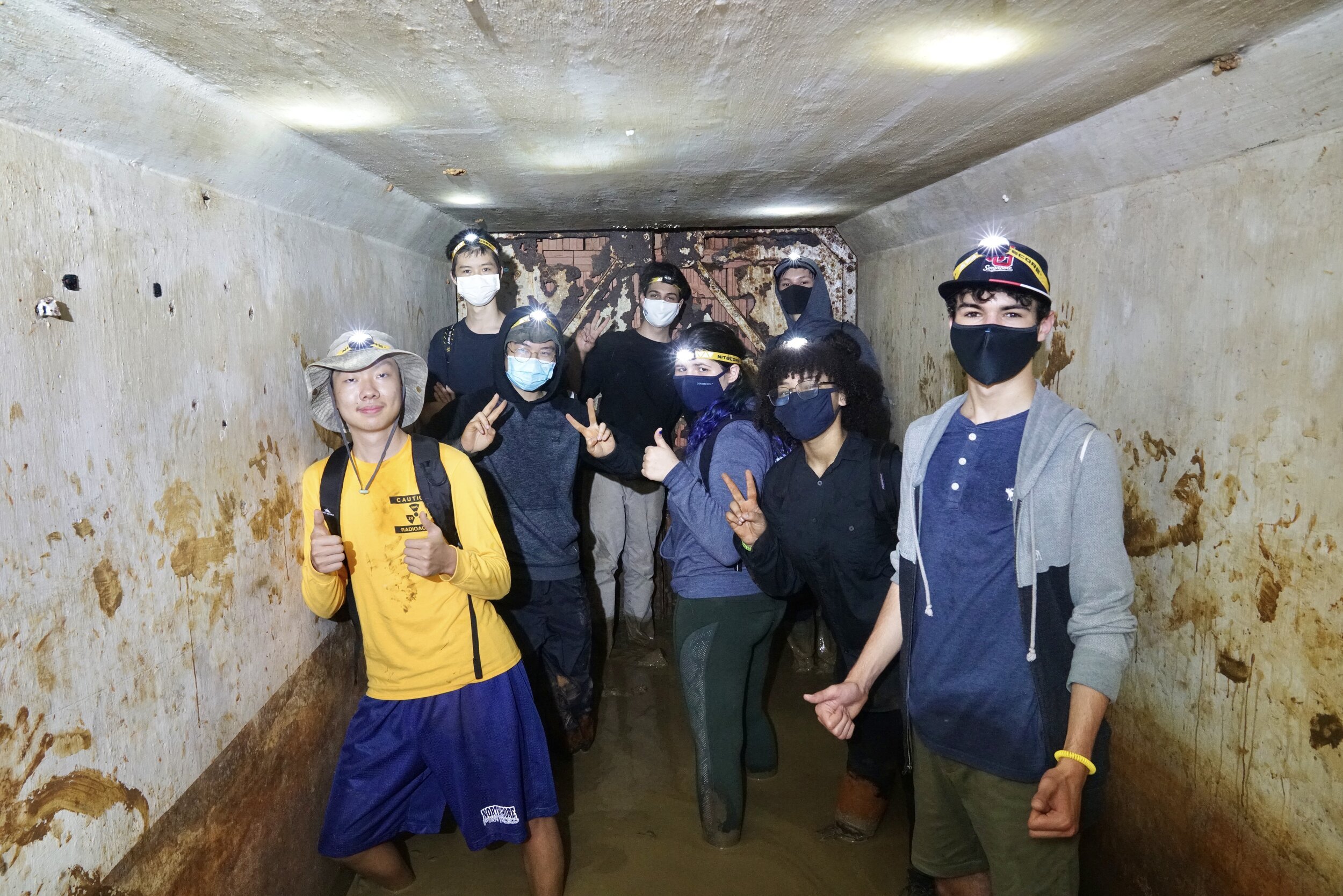
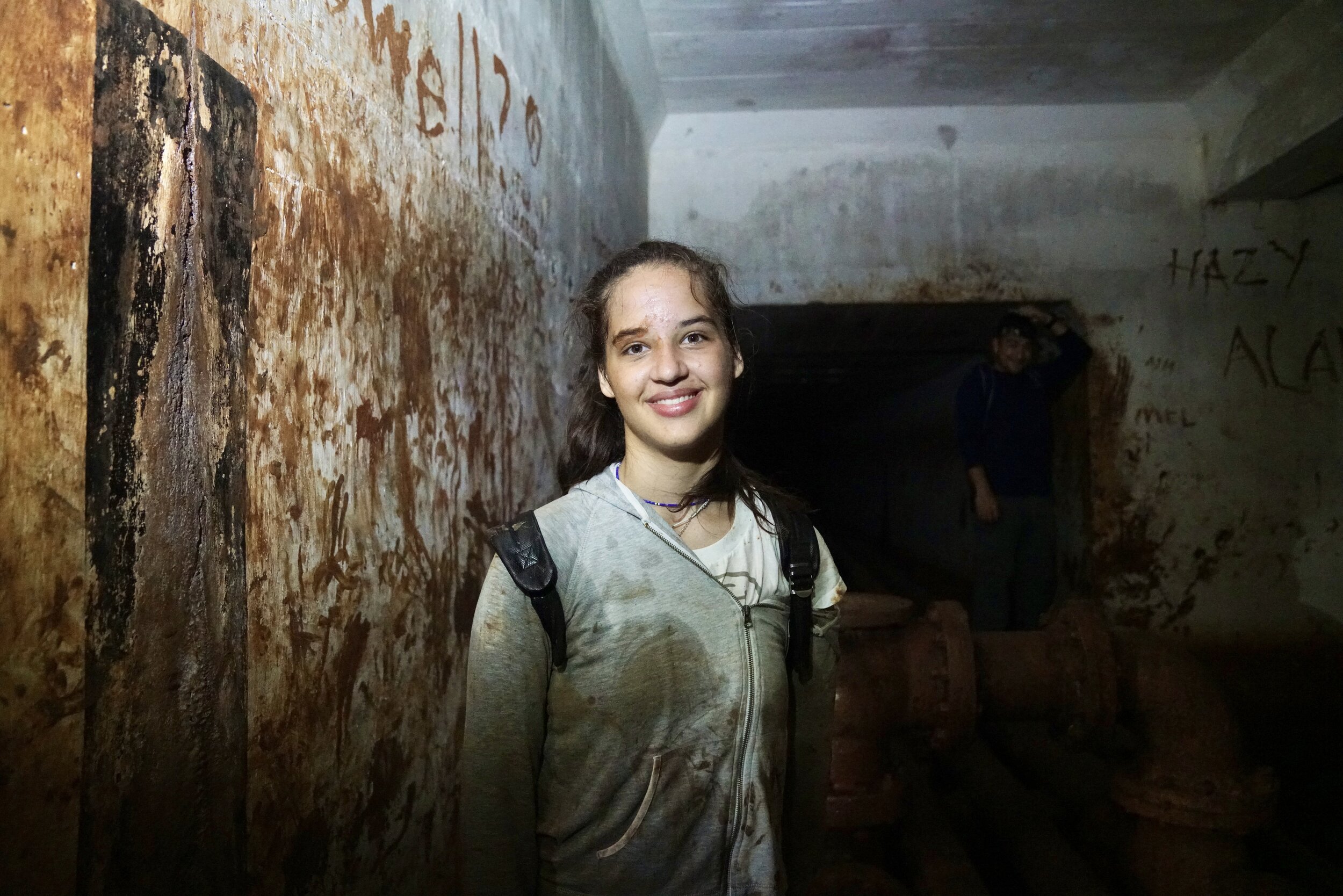
After the war, the bunker had slowly fallen into disuse, becoming a hideout for secret society gangsters and illegal immigrants who would swim across to Singapore from Malaysia. The most famous fugitive it ever harboured was Mas Selamat, a famous terrorist who escaped from a high security prison in Singapore.
Following the Mas Selamat incident, multiple entrances to the bunker were sealed up. Left otherwise untouched over the years, the bunker sank deeper into the rainforest and deeper into history.
“My favourite part of the adventure was learning about the history of the bunkers. Hearing about all the people that have stayed in them and their roles in history was really interesting. Actually walking through the places we are learning about also makes things much more interesting than just sitting in a classroom and being lectured.”
EXPLORING THE NORTH BUNKER
Before embarking on their main adventure in the South bunker, Andy, Cate and their schoolmates had also visited the North bunker for a warm-up class challenge.
Situated on the top of a slope and surrounded by undergrowth, the North bunker is much smaller, with only one room and three tunnels.
Crawling through the narrow tunnels one by one, the students braved frogs and giant geckos as a class, emerging safely into the sunlight on the other side. In the darkness of the tunnels, they shouted words of encouragement to their friends.
“Many people learn about the history of Singapore by visiting a museum or going to an exhibition, but it was not until I had visited the bunkers that I understood the extent of Singapore’s history. Singapore has become such a modern country and it is constantly changing, so it’s harder to see its history with our own eyes. The bunkers are a way to do that.”
“I felt that teamwork and self-sacrifice were part of the experience. Some people had to stay back and help other members. Other times, we had to encourage and cheer on our peers who were afraid. ”
Having explored both bunkers, the students trekked back out of the forest. Covered by the lush tropical foliage, the bunkers were once again invisible to the eye.
Soaking in the sights and sounds of nature, Isabelle, Andy and their schoolmates marvelled at a morning spent at this abandoned historical site in the woods.
For a few short hours, they’d caught a glimpse of Singapore’s past in the present, hidden in plain sight.
Now it was time to return to school, and ordinary city life again.
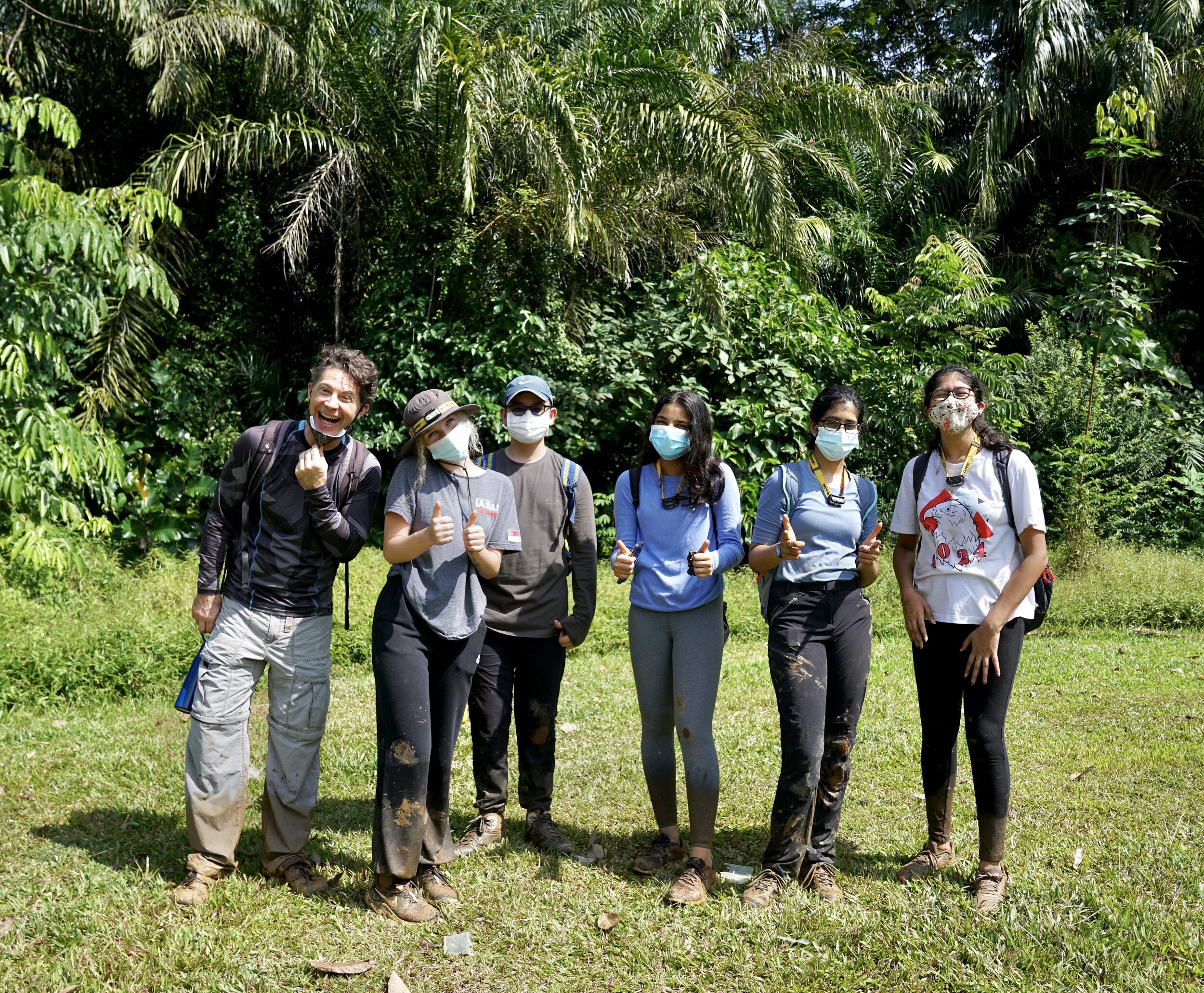
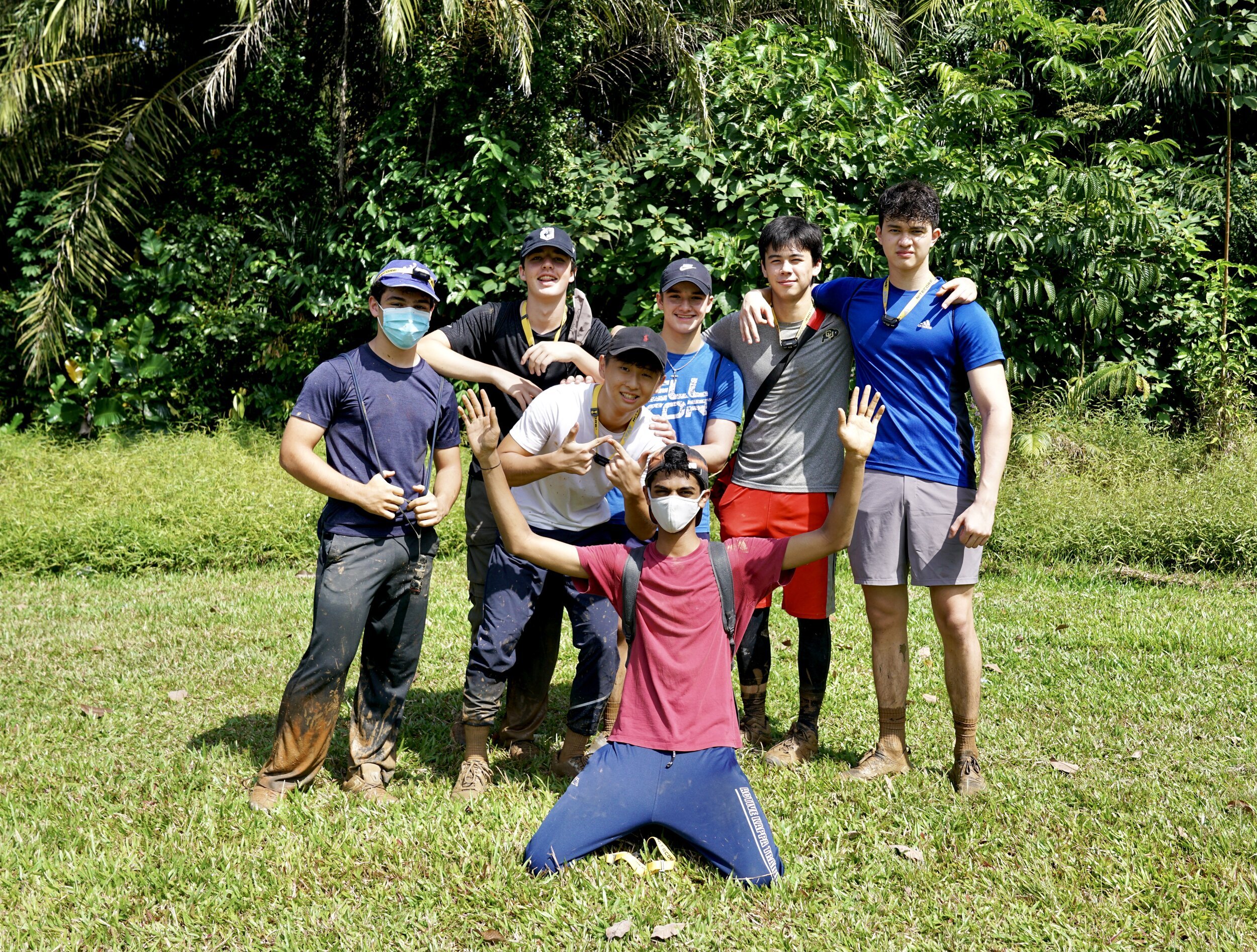
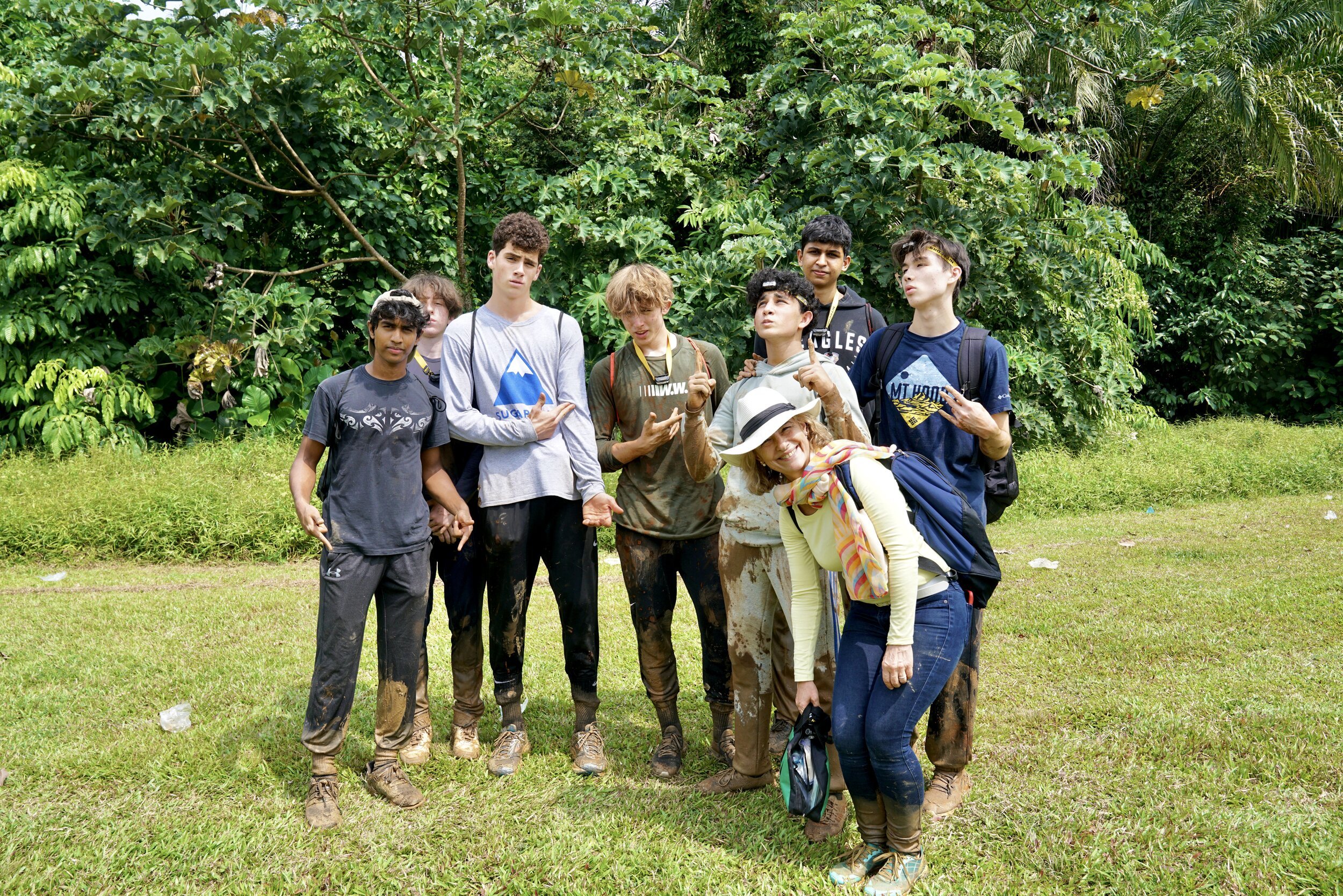
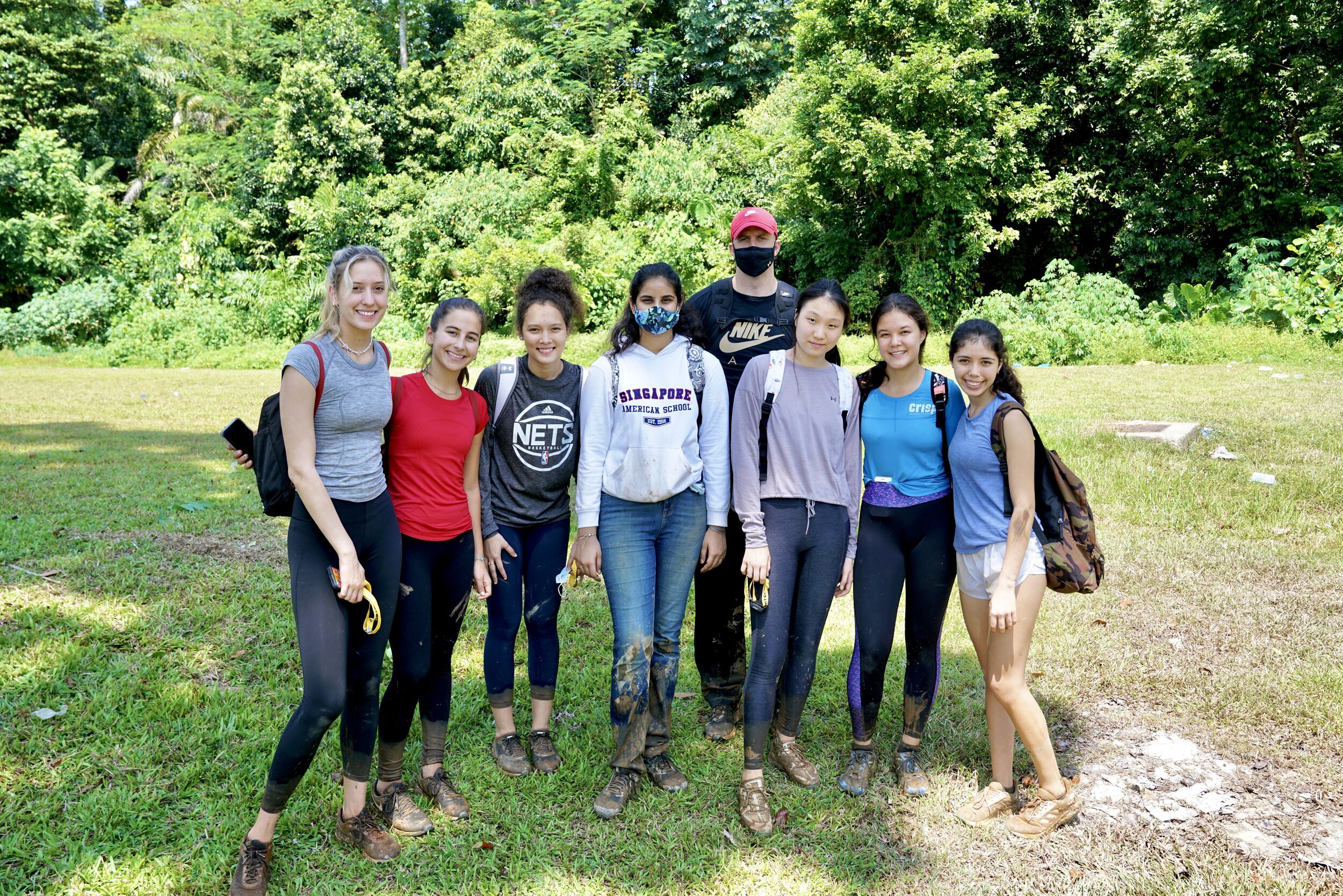
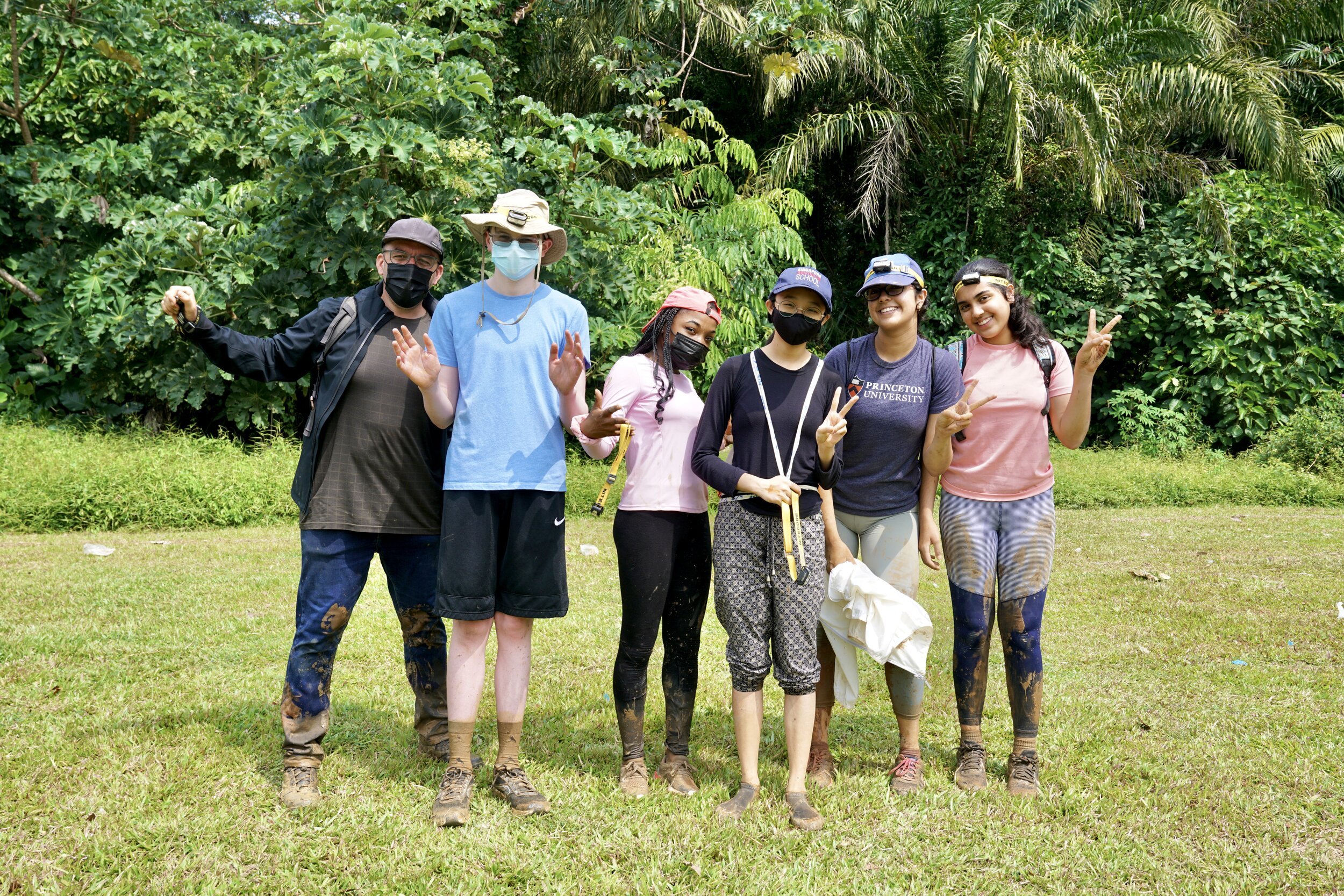
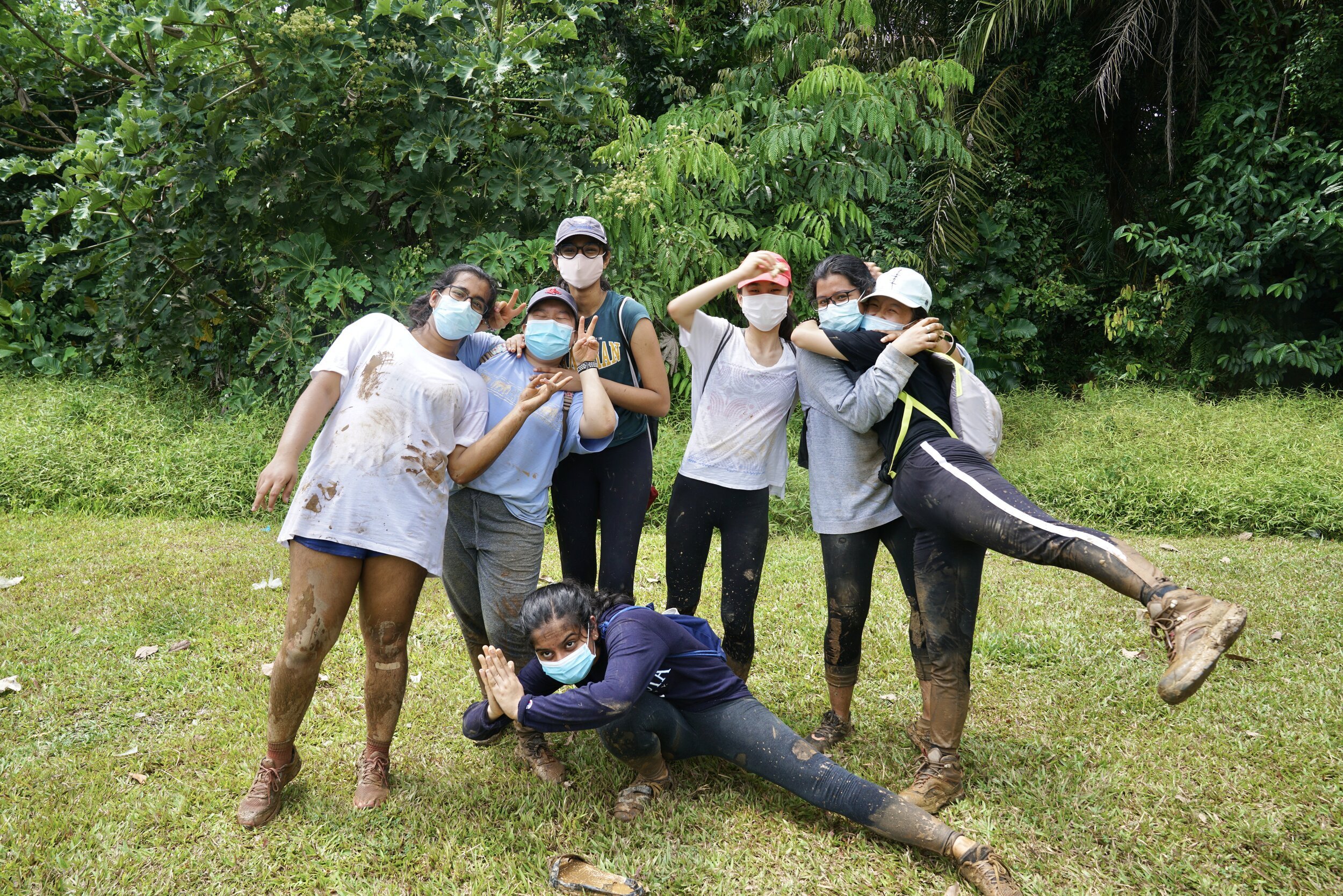
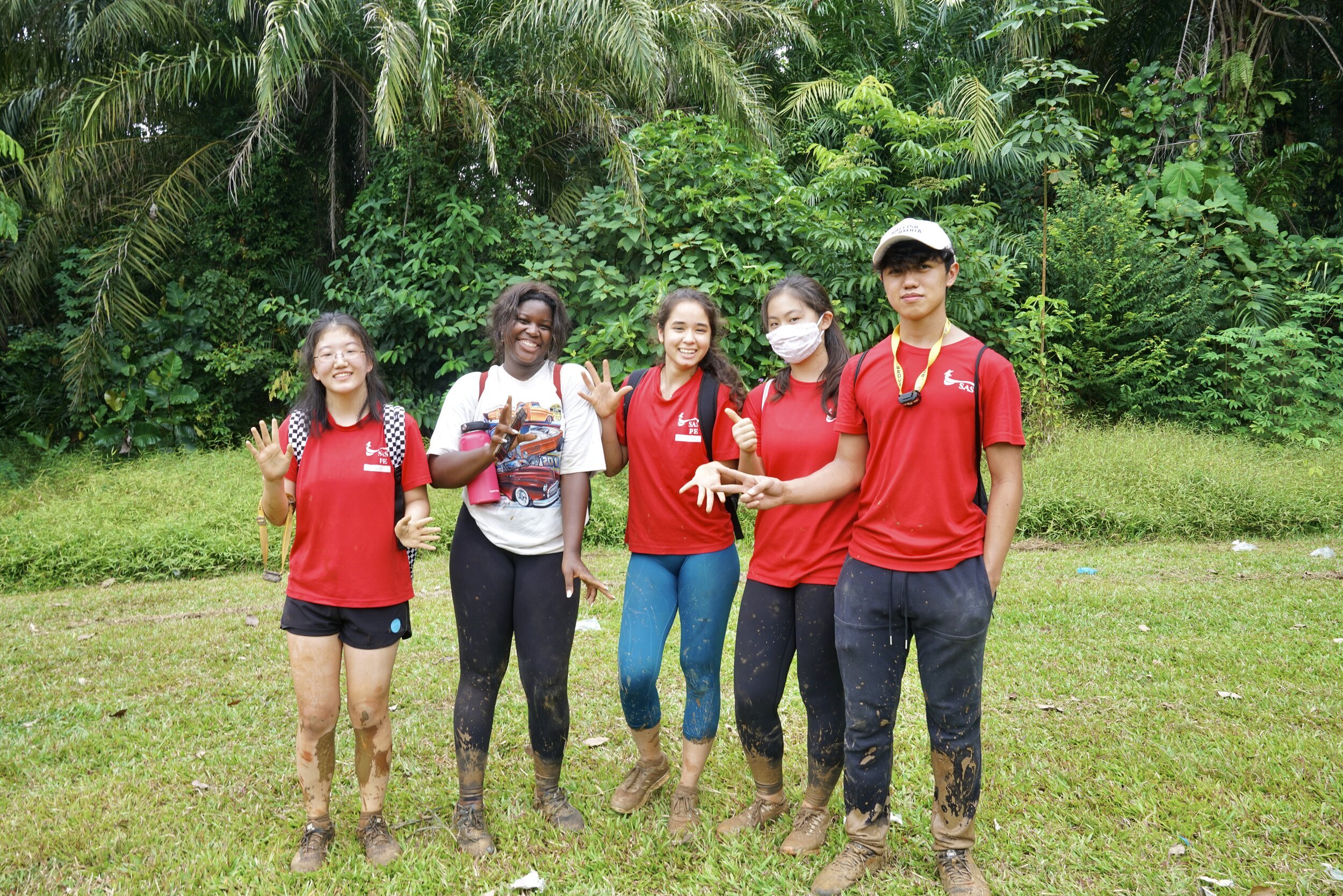
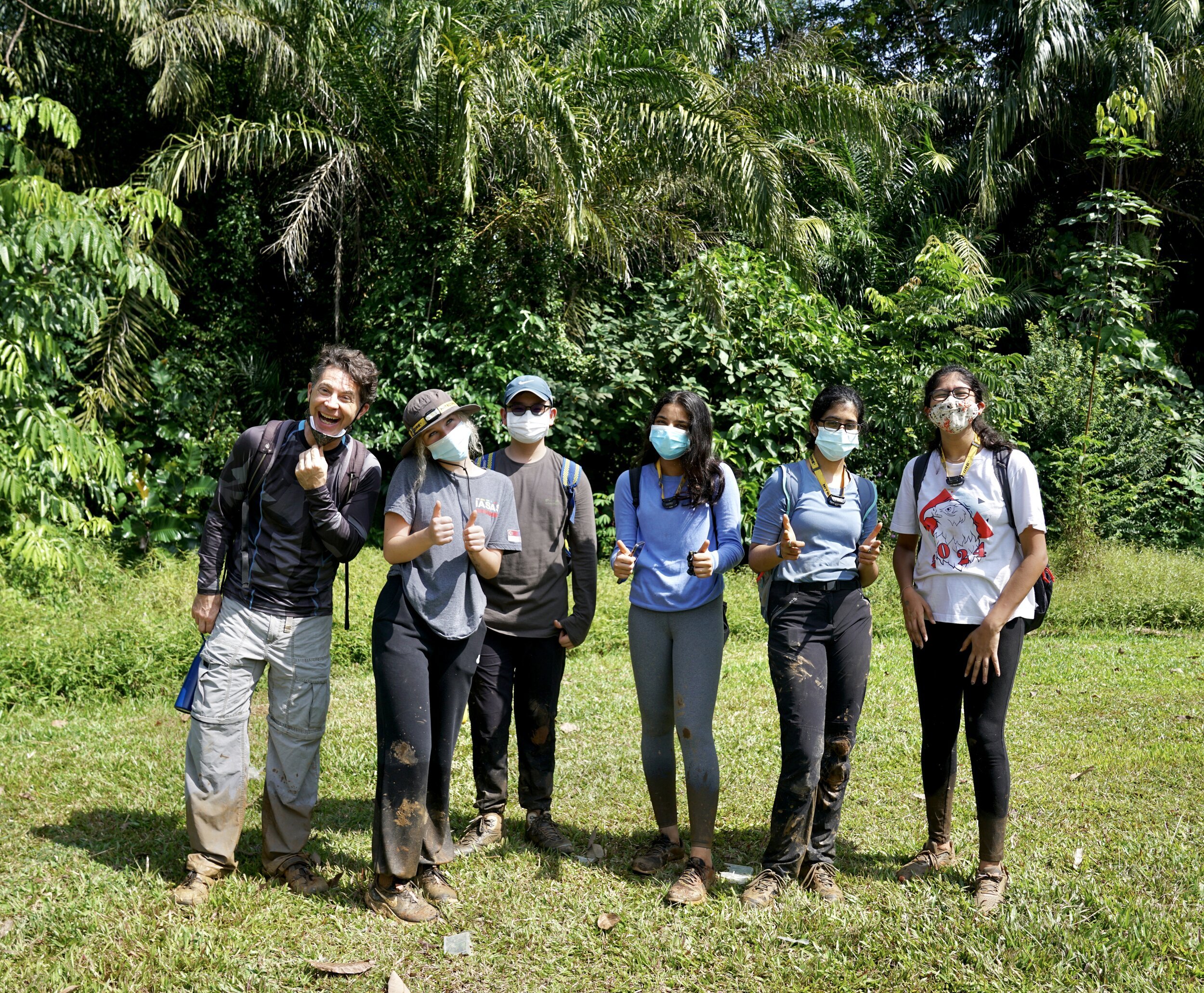
All in all, more than 160 SAS students and teachers visited the Marsiling Bunkers that week in February.
When we asked them what they’d gained from the experience, they had these answers:
An exciting jungle adventure
Teamwork and bonding time with classmates
A real-life lesson on Singapore’s WWII history
Time in nature, away from the stresses of city life
If you are keen to find out more about exploring the WWII Marsiling Bunkers for a school activity like SAS did or a corporate team bonding event, please get in touch with us at discover@beyondexpeditionssg.com


